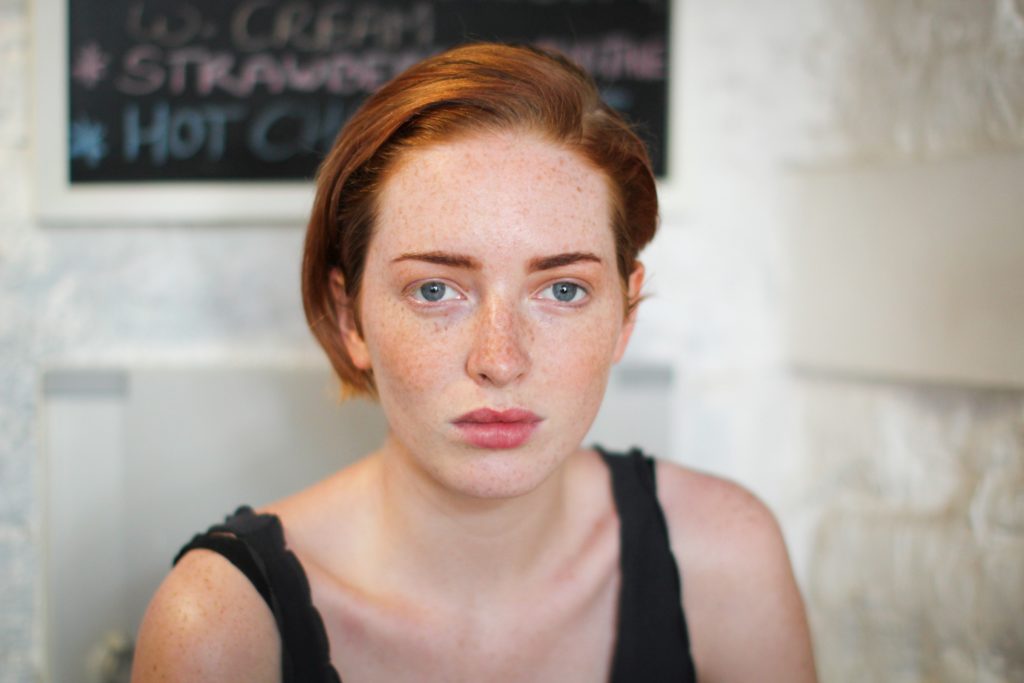Oxfordshire Mind’s Physical Activity Team are offering a weekly ‘virtual walk’ this week the team are visiting the south of France.
Hello, walkers. Welcome to our walk today in the sunny south of France: Provence, the region of Mediterranean sunshine, picturesque stone farmhouses and fields full of swaying lavender. For a few weeks during high summer, the countryside is transformed into a sea of purple, drawing visitors to the region from miles around. It’s this glorious floral display that we will be visiting today, hoping to spend a little time unwinding in the perfumed air.
We are starting our walk in a sleepy hilltop village, set on a rocky outcrop high above the surrounding fields. This is typical Provence; little alleyways lined by pretty stone buildings, balconies and shuttered windows overlooking the street. It’s early afternoon, just past lunchtime, and as we wander through the village, the cafes are taking in their signs and closing their doors, shutting up for the post-lunch siesta.
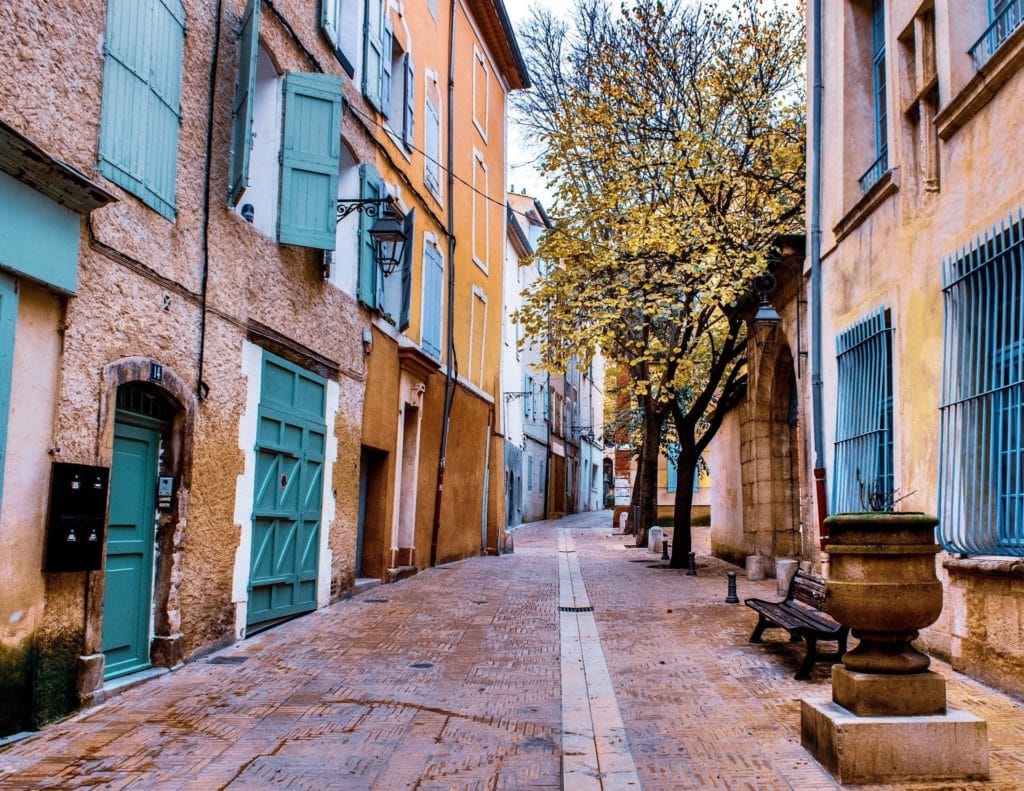
It really is a beautiful spot. There’s something special about the light here; you can see how this region has inspired so many famous artists. It was in this part of France that Vincent Van Gogh painted some of his most famous works, the scenes of wheatfields and cafes and The Starry night.
There is a sign leading out from the centre of the village saying ‘lavender walk’. We follow the trail, which takes us down steps and through narrow alleys out of the centre of town. We keep going along the winding path down from the hill, until the land flattens out into the plain. And here we are, standing on the edge of one of these famous fields. The lavender stretches out before us in neat rows, bright purple as far as the eye can see. We walk along the line of soil between two rows of bushes, towards the little stone farmhouse on the other side of the field.
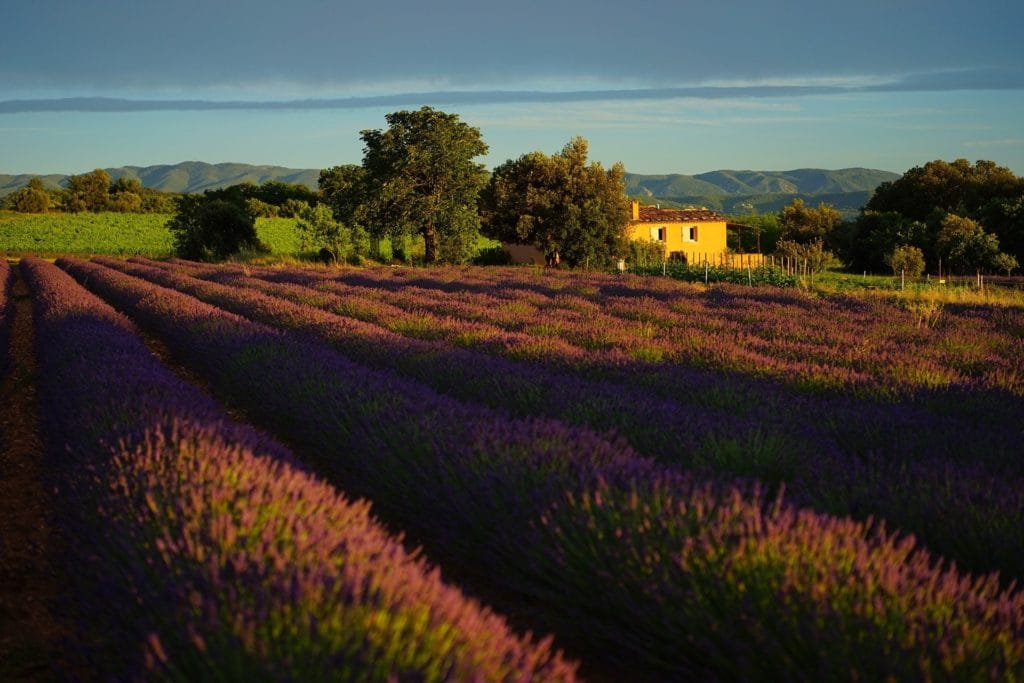
The sun is slowly slipping past its zenith now, and it is that still, quiet point of the day in the Mediterranean where the entire world seems to doze. The hazy sunlight lies over everything like a blanket, and the thrum of the insects is like the land snoring quietly in its sleep. They are the only things stirring in all of this. The bees, dozens and dozens of them, are steadily doing the rounds of each flower, as if they were scared to offend one of them by leaving them out, while the butterflies flit from place to place in flashes of red or white.
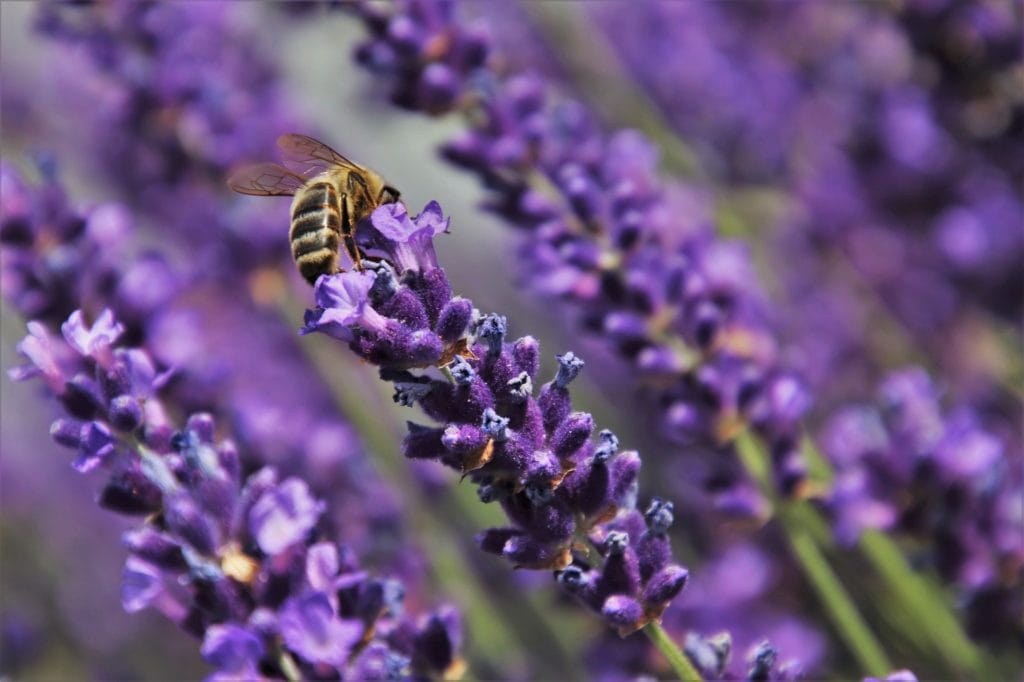
You’re not supposed to pick the flowers – this is the farmer’s crop, after all- but it’s impossible to resist reaching out and running your hands through the bushes as you walk past, perhaps crushing a sprig or two between your fingers. The sharp, herbal scent clings to your skin when you raise them to your nose afterwards. How would you describe what lavender smells like, do you think, to somebody who’d never experienced it before? If the smell of a rose is warm and luxurious, like running your hands over deep red velvet, I would say lavender smells crisp and clean, like a cool breeze fluttering through fine linen curtains. But perhaps that’s not very helpful. Maybe you would have to resort to describing the things that the scent has become associated with; the insides of drawers and cotton bedsheets and the kind of soap grandmothers keep tucked away the corner of the bathroom for when guests come.
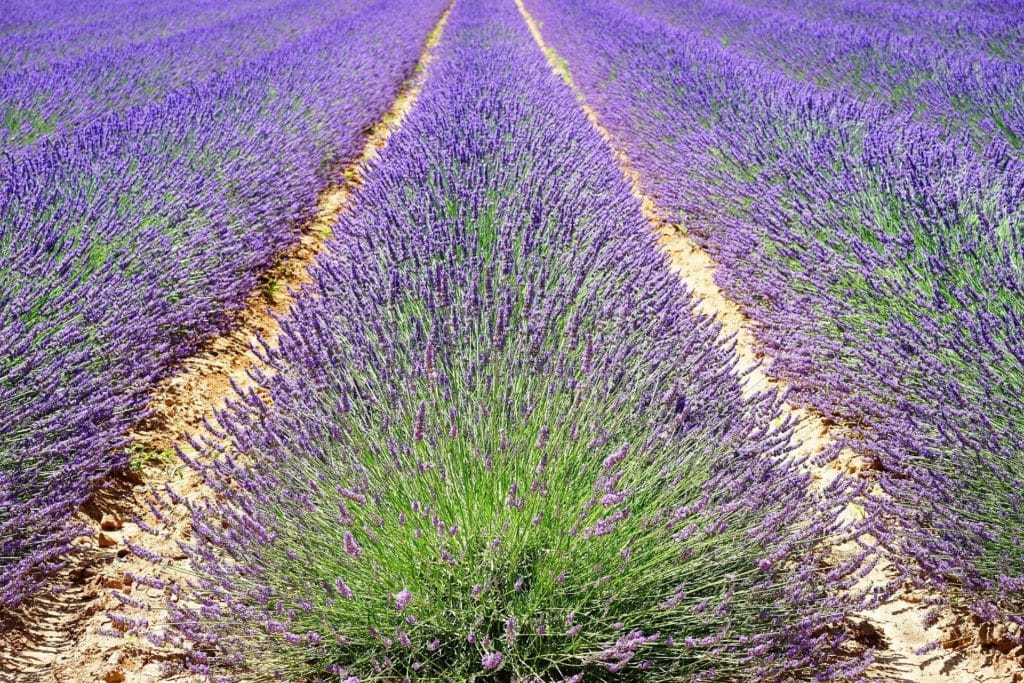
Lavender is not the only flower you can see here. Sunflowers are also growing on the margins of the field, their bright yellow heads bobbing up sheepishly above the sea of purple, like tall children relegated to the back of the class photo. Do you know what they’re called in French? Tournesols. Isn’t that a beautiful word? It’s even prettier when you know it comes from ‘turn’ and ‘sun’- describing the way the flowers rotate throughout the day to make sure their faces are always bathed in sunlight.
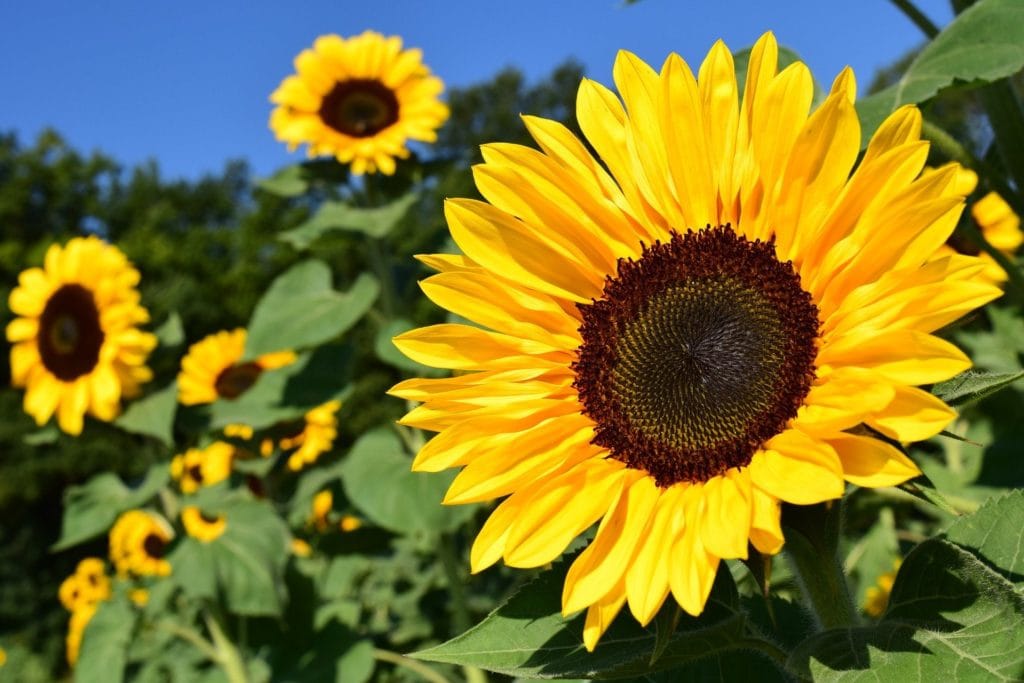
Sunflowers were one of Van Gogh’s favourite subjects to paint- he came back to it over and over again, and there’s even a portrait by another artist where he is shown painting sunflowers. Perhaps Van Gogh was walking by a similar field to this one when the inspiration first struck him. There wasn’t a lot of sunshine in that artist’s life, so even if it’s not true, it’s nice to imagine him spending a happy afternoon in the company of these cheerful flowers. But of course, as with many things about Van Gogh’s life, it’s likely we’ll never know.
We reach the farmhouse at the end of the field. Here there is a small gift shop, where the family who own this farm sell all sorts of products. We step inside, into the blessed cool of the stone building. The woman behind the counter- wearing a rather stylish apron embroidered with a lavender design—looks up from her book and smiles broadly at us as we enter. She introduces herself as the farmer, Sylvie, who runs the farm alongside her parents, before giving us a brief tour of her wares- bunches of lavender, lavender bags, lavender soap , cushion covers and tea towels embroidered with little purple flowers.
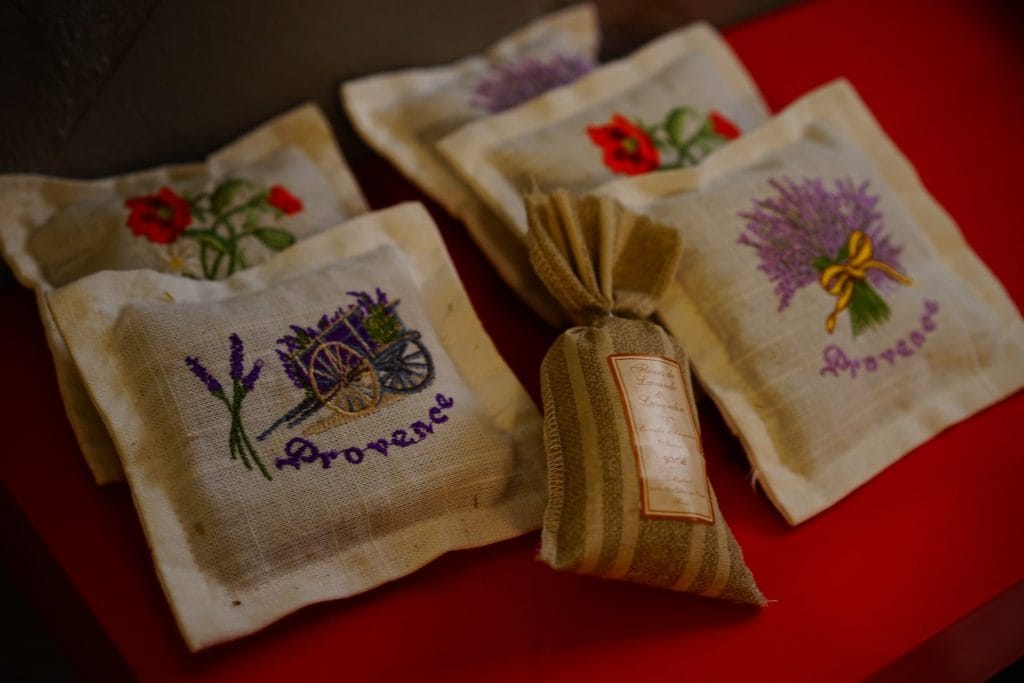
There’s even a freezer full of lavender ice cream, which she gives us each a taste of. It’s a sweet, intense burst of that floral fragrance we’ve been inhaling all this time, like a little bit of summer breeze melting on your tongue. Perhaps it’s the heat, or perhaps it’s the friendly way it has been offered to us, but it suddenly seems rude not to buy a full scoop of it. It is traditional, after all.
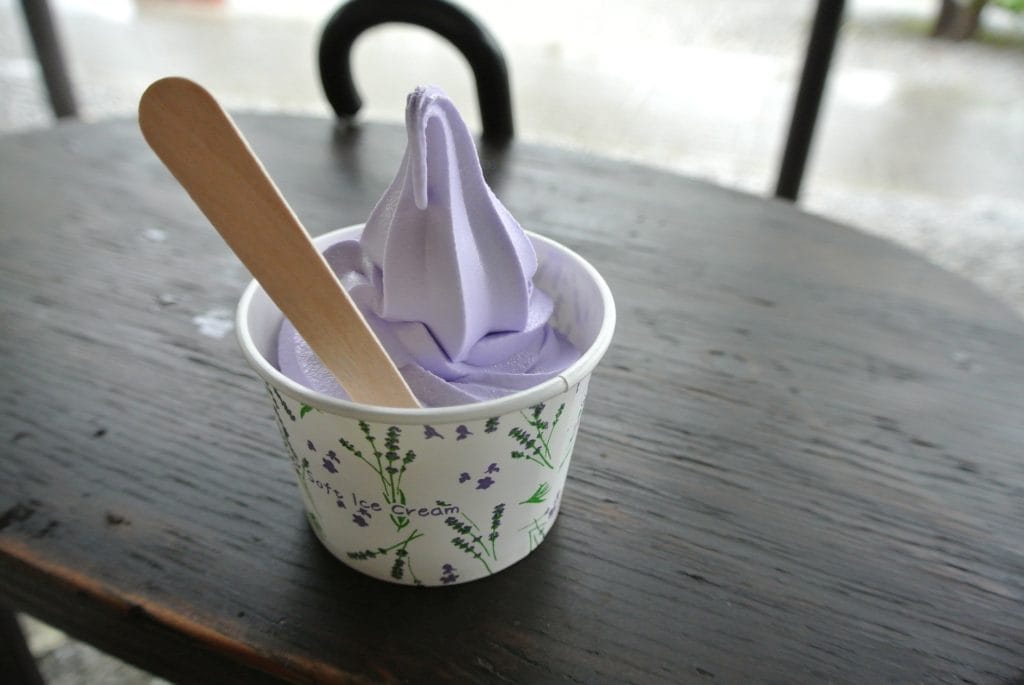
Suitably refreshed, and perhaps laden with a couple of themed purchases pressed upon us by the clever saleswoman Sylvie, we begin our walk back up to the village. Soon the sun will begin to sink towards the horizon, and the village will start to wake from its midday slumber. There will be new things to explore then, as the cafes and shops unbar their shutters and open up for the evening. But there should be time for a brief rest in the shade indoors before then. See you next week for another walk!

